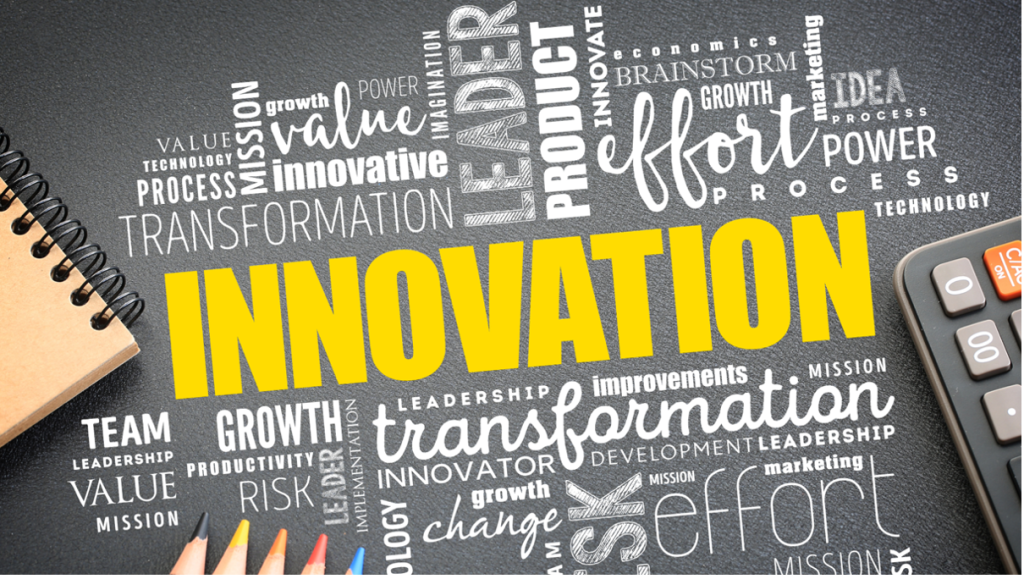
In the last 25 years, I've worked with world-renowned brands such as Indosat, Bupa, Vodafone, and Multichoice, among others. Complementing my professional journey, I've enriched my knowledge through educational programs at four top five universities globally - MIT, Harvard Business School, Oxford, and, most recently, Cambridge, focusing on business and technology strategy.
Whether it is leading digital strategy or launching Trivaeo, my tech start-up, these experiences have significantly enhanced my comprehension of the varied impacts and compelling motivations behind fostering innovation ecosystems. Embracing a comprehensive strategy that effectively merges technology, business goals, and societal objectives can drive transformative changes within your business and potentially throughout the entire region.
Building an IT Innovation Ecosystem can bring many advantages to businesses and their communities. Think of it as a supportive network or space that helps grow new ideas and technological advancements. This ecosystem includes bringing those together in anything from big and small businesses to universities, research groups, government bodies, and people who invest in these ideas.
By doing this, you can create a place where these groups can share their ideas and work together, which helps everyone involved. The result is an environment ripe for innovative solutions and pushing technological boundaries.
What is the business value this approach would bring to your organisation? Imagine the potential of bringing together multiple business stakeholders and techies to exchange ideas and expertise. These cross-pollinating thoughts and perspectives can lead to advancements in AI, IoT, cybersecurity, and more.

While the emphasis on open collaboration and diverse inputs is paramount, there's room for proprietary innovation. For instance, when we think of global chip makers, they excel in designing chips but often outsource manufacturing. This specialisation creates an ecosystem where each player contributes their unique strengths.
By strategically embracing the NIH principle, organisations can focus on their core competencies. This ensures that teams excel in their areas of expertise without feeling compelled to reinvent the wheel. Therefore, when thoughtfully integrated into an innovation ecosystem, NIH can be a catalyst for efficient and effective progress.
As we delve deeper into the dynamics of innovation ecosystems, it's crucial to balance open collaboration and recognising individual strengths, ensuring that each participant brings their best to the table.
The benefits of such an innovation ecosystem extend beyond your objectives and will challenge you to think bigger than your business. They can drive economic growth by creating jobs and attracting investments, enhancing a region's competitiveness in the global market.
Increased collaboration with academic institutions also pays it forward by leading to better educational programs that align curriculums with current industry needs. But most importantly, it produces a workforce with relevant, up-to-date skills.
Beyond economic and educational impacts, an innovation ecosystem optimises resources by encouraging the sharing of labs, software, and expertise. This not only reduces costs but also maximises the efficiency of available resources.
By bringing diverse perspectives and knowledge together, your teams are better equipped to tackle complex challenges. This leads to more comprehensive and innovative solutions. Additionally, these ecosystems develop a life of their own and often open up global connections, offering businesses and individuals opportunities to network and collaborate with international partners to unlock priceless global insights and access to new markets.
Providing data and expertise and demonstrating effective strategies can influence policymaking, leading to policies that better support technology innovation and business growth.

It's also worth highlighting that an innovation ecosystem is designed to help with incoming ESG initiatives. Once again, the newfound collective intelligence helps develop sustainable solutions to address environmental and social challenges. This approach proves that businesses can increase their bottom line while making a difference by contributing to a more sustainable and equitable world.
From my experiences and throughout the many academic discussions, I have witnessed the transformative power of innovation ecosystems first-hand. I have seen how they create a dynamic and synergistic environment where technology, business, and social objectives intersect. The result is often innovations that address complex challenges in business and society.
I believe the future belongs to those who can effectively navigate and leverage the dynamic landscape of innovation ecosystems. However, knowing where to start can be challenging.
Building a technology innovation ecosystem is a strategic and transformative path. But make no mistake, it does require meticulous planning and execution. So, the first step should be identifying your innovation ecosystem's exact purpose and goals from the outset.
Whether you aim to create a culture of collaboration, support start-ups, attract investment, or drive economic growth, having clear objectives is crucial. These goals guide you in shaping the ecosystem's structure and activities to ensure all your efforts are aligned with your vision.
Building a solid network will help you form the backbone of this ecosystem. By distancing yourself from the 'Not Invented Here' mentality, you can partner with diverse stakeholders from universities, research institutions, industry leaders, government agencies, venture capitalists, and local entrepreneurs. Engaging with these partners will help create a supportive and dynamic network essential to the ecosystem's success.

You will also need to think of spaces like innovation hubs, incubators, and co-working areas as more than physical locations. They are the breeding grounds for creativity and collaboration. These safe spaces allow everyone to collaborate, share ideas, and work on transformative projects. However, they must have essential resources such as high-speed internet, labs, and prototyping facilities.
Elsewhere, organising events, workshops, seminars, and conferences will empower your teams to step foot outside of the four walls of your office and exchange insights and experiences. This enhances the skill sets of individuals within the ecosystem and fosters networking opportunities, connecting individuals with complementary skills and expertise.
Your objective is to create an environment where knowledge is acquired, actively shared, and amplified. This simple foundation paves the way for the innovation ecosystem's gradual growth of collective intelligence.
Several years back, I authored a paper on Collective Intelligence, and my conviction has only deepened since then. The notion of "not invented here" need not be viewed negatively, as I've realised the pivotal role an innovation ecosystem plays in nurturing collective intelligence. Such an ecosystem fosters an atmosphere ripe for exchanging, integrating, and enriching various ideas, insights, and viewpoints.
Thankfully, the focus has shifted away from prioritising the HIPPO (highest-paid person's Opinion) in decision-making processes.
Instead, the innovation ecosystem strongly emphasises diversity of thought and inclusivity, bringing together individuals from a wide range of backgrounds and disciplines. Moreover, it includes tools such as databases and libraries for sharing knowledge, ensuring that information is readily available, and reducing redundant efforts.
The ethos of an innovation system extends to fostering open innovation models and crowdsourcing, leveraging collective intelligence within an organisation and from a broader community.
This approach aids collective decision-making, harnessing the crowd's wisdom for superior outcomes. Moreover, such systems advocate a culture of continuous learning and adaptation, integrating feedback mechanisms and iterative processes for refining ideas and solutions.
Incorporating advanced technologies, including artificial intelligence, plays a crucial role in analysing vast data sets and generating insights beyond individual human capabilities. This technological integration enhances human intelligence within the innovation system.
A new company ethos that recognises collaborative efforts promotes risk-taking and views failures as valuable learning experiences. An innovation ecosystem facilitates the effective sharing of knowledge by providing the necessary infrastructure, culture, and tools. This leads to more innovative and practical solutions to complex challenges.
Innovation ecosystems finally bring together multiple stakeholders to help leaders unlock a culture of collaboration. Together, they can drive economic progress, support start-ups and entrepreneurs, and foster a culture of collaboration and knowledge exchange, enhancing a region's global competitiveness.
With my experiences in Indonesia, at Trivaeo, and through academic discussions, I've witnessed these ecosystems' profound impact on shaping technology, business, and society.
The future beckons business leaders and innovators to not just participate in but actively shape these dynamic ecosystems.
As we stand at the cusp of this technological renaissance, the question is no longer why build an Innovation Ecosystem. But how swiftly and effectively we can integrate into this vibrant network to harness its full potential for the greater good of society and the business world.
